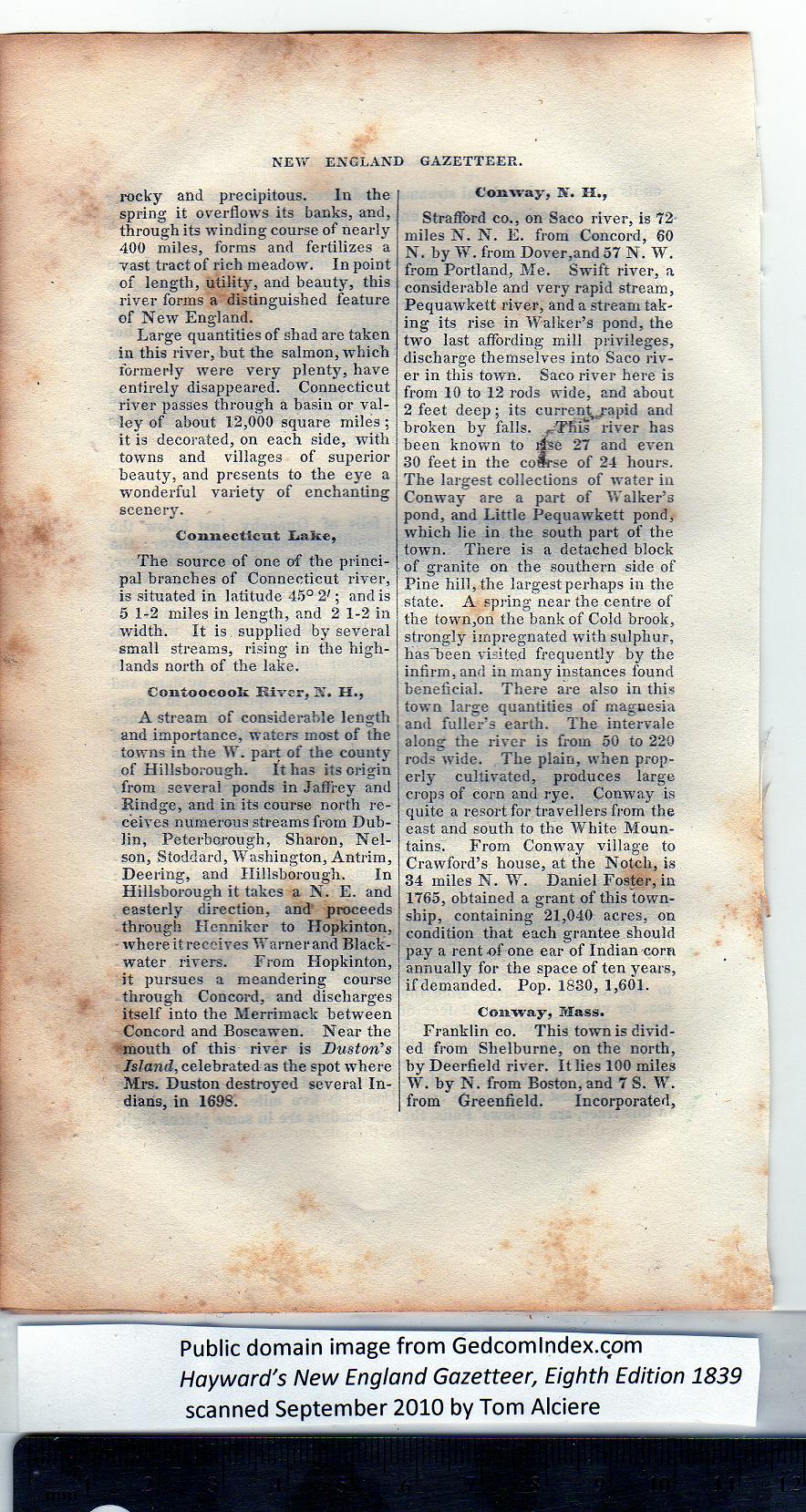|
rocky and precipitous. In the
spring it overflows its banks, and,
through its winding course of nearly
400 miles, forms and fertilizes a
vast tract of rich meadow. In point
of length, utility, and beauty, this
river forms a distinguished feature
of New England.
Large quantities of shad are taken
in this river, but the salmon, which
formerly were very plenty, have
entirely disappeared. Connecticut
river passes through a basin or val-
ley of about 1-2,000 square miles ;
it is decorated, on each side, with
towns and villages of superior
beauty, and presents to tbe eye a
wonderful variety of enchanting
scenery.
Connecticut Lake,
The source of one of the princi-
pal branches of Connecticut river,
is situated in latitude 45° 2'; and is
5 1-2 miles in length, and 2 1-2 in
width. It is supplied by several
small streams, rising in the high-
lands north of the lake.
ContoocooR River, X. H.,
A stream of considerable length
and importance, waters most of the
towns in the W. part of the county
of Hillsborough. It has its origin
from several ponds in JafFrey and
Rindge, and in its course north re-
ceives numerous streams from Dub-
lin, Peterborough, Sharon, Nel-
son, Stoddard, Washington, Antrim,
Deering, and Hillsborough. In
Hillsborough it takes a N. E. and
easterly direction, and proceeds
through Henniker to Hopkinton,
where it receives Warner and Black-
water rivers. From Hopkinton,
it pursues a meandering course
through Concord, and discharges
itself into the Merrimack between
Concord and Boscawen. Near the
mouth of this river is Duston's
Island, celebrated as the spot where
Mrs. Duston destroyed several In-
dians, in 1698. |
Conway, 3Y. H.,
Strafford co., on Saco river, is 72
miles N. N. E. from Concord, 60
N. by W. from Dover,and 57 N. W.
from Portland, Me. Swift river, a
considerable and very rapid stream,
Pequawkett river, and a stream tak-
ing its rise in Walker’s pond, the
two last affording mill privileges,
discharge themselves into Saco riv-
er in this town. Saco river here is
from 10 to 12 rods wide, and about
2 feet deep; its currenl^j-apid and
broken by falls. ^Tfiis river has
been known to i|se 27 and even
SO feet in the cowrse of 24 hours.
The largest collections of water in
Conway are a part of Walker’s
pond, and Little Pequawkett pond,
which lie in the south part of the
town. There is a detached block
of granite on the southern side of
Pine hill, the largest perhaps in the
state. A spring near the centre of
the town,on the bank of Cold brook,
strongly impregnated with sulphur,
has'been visited frequently by the
infirm, and in many instances found
beneficial. There are also in this
town large quantities of magnesia
and fuller’s earth. The intervale
along the river is from 50 to 220
rods wide. The plain, when prop-
erly cultivated, produces large
crops of corn and rye. Conway is
quite a resort for travellers from the
east and south to the White Moun-
tains. From Conway village to
Crawford’s house, at the Notch, is
34 miles N. W. Daniel Foster, in
1765, obtained a grant of this town-
ship, containing 21,040 acres, on
condition that each grantee should
pay a rent of one ear of Indian corn
annually for the space of ten years,
if demanded. Pop. 1830, 1,601.
Conway, Mass.
Franklin co. This town is divid-
ed from Shelburne, on the north,
hy Deerfield river. It lies 100 miles
W. by N. from Boston, and 7 S. W.
from Greenfield. Incorporated, |
